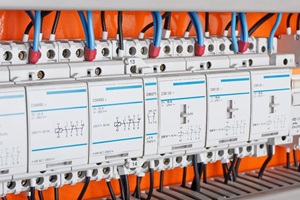- Utility Transformations
- Utility Transformations
- 5G
- IoT
- Utility Digitization
Ericsson Presents Its Future Vision for the Neural Grid

At its London-based industry analyst event, Ericsson detailed areas for future growth. Its primary customer base (communications service providers [CSPs]) is looking for growth in an age of flat revenue from existing services. Ericsson believes this future growth will be made possible by the rollout of 5G communications—by 2026, Ericsson predicts 5G will contribute to a potential 36% of revenue growth for CSPs.
Ericsson cites the utilities industry as the largest opportunity for digitization. With a $101 billion addressable market likely in 2026, utilities present the second largest Internet of Things (IoT) opportunity (after manufacturing). The energy transformation is central to this growth. As the industry shifts toward a distributed future, connected asset deployments will increase exponentially. In addition, regulatory focus on advanced network flexibility requires significant improvements into a distribution utility’s visibility of loads and supply. All things being equal, the energy industry presents a juicy opportunity for CSPs.
Cellular Carriers to Prosper in Utilities with a Group of Technologies
Ericsson stated that CSPs will only succeed with a combination of technologies, and presented the reasonably compelling proposition of IoT services, supported by network-slicing-enabled 5G communications, and a concept it calls the distributed cloud.
IoT is often cited as the next big thing for CSPs. The term IoT has failed to gain traction in the utility industry primarily because the industry was comfortable with the technology long before the term was used to describe it. But this experience also presents a problem for telcos chasing profits in energy—the industry has to be convinced to switch from the proprietary, self-built, and decades old IoT communications networks to public carrier networks. The critical question is how Ericsson, and its CSP clients, can profit from the utilities industry.
Existing infrastructure may be difficult to convert to a public carrier, particularly for utilities rewarded for CAPEX on new assets. However, the sheer volume of low value assets that will become connected in the future pose many problems to utilities. Passing responsibility onto a third-party provider could well be an attractive proposition, if issues surrounding scalability, security, cost, and network availability are overcome.
5G may be the answer to this, particularly when connecting lower value, less critical assets (such as customer owned distributed energy resources (DER) or network equipment on low voltage networks). 5G offers much greater bandwidth than previous communications, while the ability to create virtual slices of the same physical network communications will help utilities overcome concerns regarding network availability for more valued assets.
Ericsson’s Distributed Cloud Approach Could Help Future Distribution Operation
Ericsson’s distributed cloud concept plays well into utilities’ current and future needs for edge computing. Ericsson has identified an opportunity for CSPs to host cloud servers in their existing real estate. CSPs’ buildings often have underutilized floorspace, yet are in central locations, directly connected to fiber rings and have good power supply. Ericsson believes its distributed cloud could compete as a low cost alternative to utility-owned, grid-edge computing that provides local data filtering and analytics.
Guidehouse Insights has actively defined the technological needs of future transactive markets, in particular real-time visibility into DER, the calculation of hyper-local pricing of network access, the hosting of localized smart contracts for transactive energy participants, and more. The technology proposed by Ericsson has surprisingly close alignment with these requirements. Ericsson’s biggest challenge to convert an opportunity into sales is to overcome the industry’s innate conservatism and the current preference for proprietary IoT infrastructure. Regardless of how attractive the public network is, utilities still have a strong preference to build their own networks. Increasing cybersecurity concerns will only reinforce this attitude.